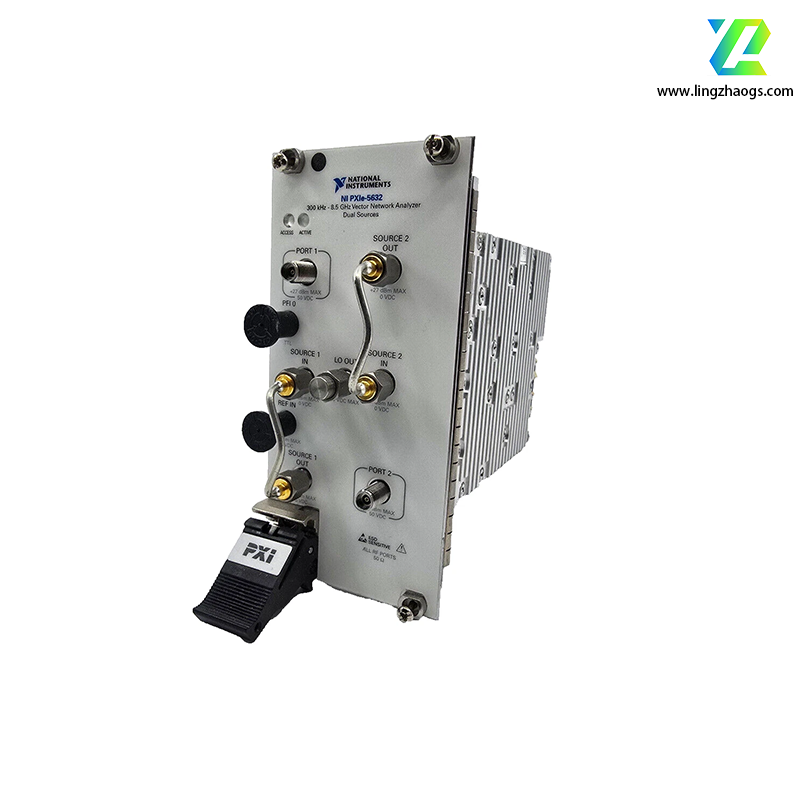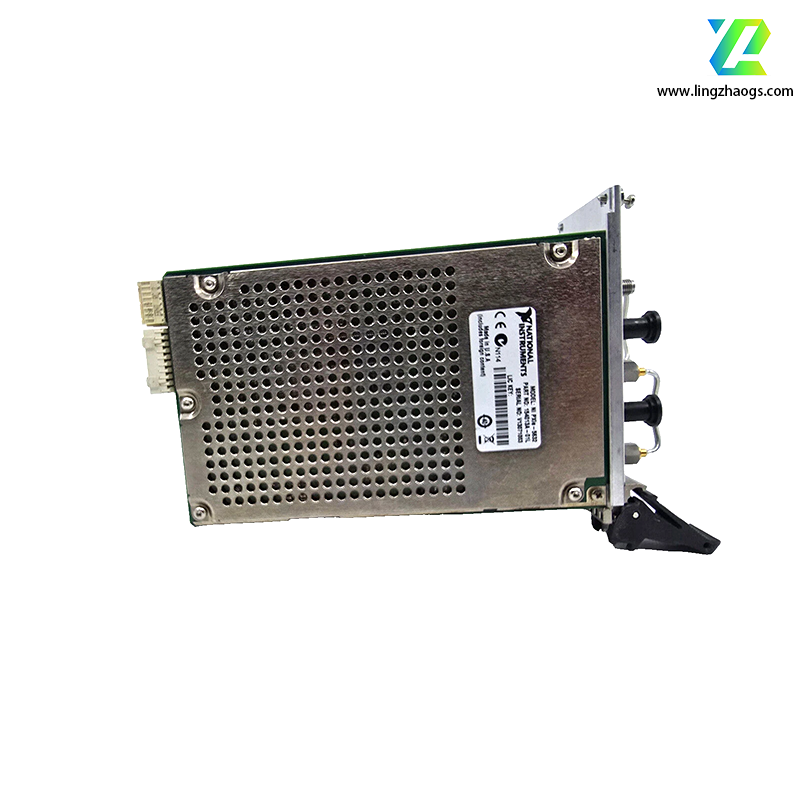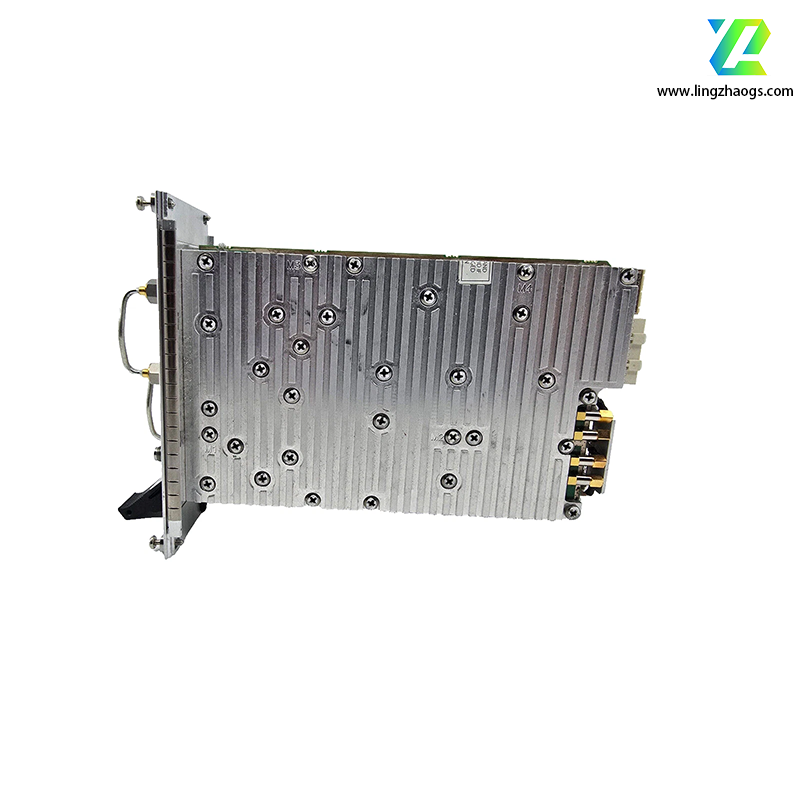Detailed Specifications of NI PXIe-5632 Vector Signal Analyzer Module
The NI PXIe-5632 is a high-performance vector signal analyzer (VSA) module designed for the PXI Express (PXIe) bus architecture, belonging to National Instruments (NI)’s RF test product family. Its core advantages include 3.6 GHz maximum RF input frequency, 14-bit high-resolution ADC, and seamless integration with PXIe-based test systems—making it ideal for RF/microwave signal analysis tasks such as wireless device testing, radar signal characterization, and satellite communication system validation. With advanced signal processing capabilities and wide dynamic range, it delivers laboratory-grade performance in a compact modular form factor.
- Module Series: PXIe RF Vector Signal Analyzer (VSA), optimized for high-frequency signal analysis
- Part Numbers: 781091-01 (standard model); 781091-02 (extended temperature model)
- Physical Dimensions: 2-slot 3U PXIe form factor, 20.3 cm × 16.0 cm (width × length)
- Weight: Approximately 1.2 kg (2.65 lbs)
- Power Requirements:
- +12 V DC (3.5 A)
- -12 V DC (0.5 A)
- +3.3 V DC (2.0 A)
- Power consumption: Typical 45 W, Maximum 60 W
- Interface Type:
- PXIe x4 lane (up to 2 GB/s data transfer rate) for high-speed data streaming
- 2 SMA female connectors (RF input 1, RF input 2) for differential or single-ended RF signal input
- 1 SMA female connector (external trigger I/O) for synchronization
- Operating Temperature Range:
- Commercial grade: 0°C ~ 55°C
- Extended grade (model 781091-02): -40°C ~ 85°C (for harsh aerospace/defense environments)
- Environmental Ratings:
- Shock Resistance: 50 g peak (11 ms duration, half-sine)
- Vibration Resistance: 5 g RMS (10 Hz ~ 500 Hz, random)
- Ingress Protection: IP30 (prevents solid foreign object intrusion)
- Compliance: Meets FCC Part 15 Class A, CE EN 61326-1, UL 61010-1, and IEC 61010-1 safety & EMC standards
- Frequency Range: 9 kHz ~ 3.6 GHz (continuous coverage, no gaps)
- Input Configuration:
- 2 independent RF input channels (single-ended or differential mode)
- Input impedance: 50 Ω (standard)
- Input return loss: ≥18 dB (1 GHz ~ 3 GHz), ≥15 dB (3 GHz ~ 3.6 GHz)
- Input Power Handling:
- Maximum safe input power: +20 dBm (100 mW)
- Damage level: +30 dBm (1 W, 1 minute)
- Noise Performance:
- Noise Figure (NF): ≤10 dB (1 GHz, 10 MHz bandwidth, typical)
- Phase Noise: -115 dBc/Hz (1 GHz carrier, 10 kHz offset, typical)
- Dynamic Range:
- Spurious-Free Dynamic Range (SFDR): ≥70 dBc (1 GHz, 10 MHz bandwidth, typical)
- Third-Order Intercept Point (IP3): +10 dBm (typical, at 1 GHz)
- ADC Resolution: 14-bit (successive approximation register, SAR)
- Sampling Rate:
- Maximum real-time sampling rate: 125 MS/s (per channel)
- Equivalent Time Sampling (ETS): Supported for signals up to 3.6 GHz (extends bandwidth beyond real-time sampling)
- Bandwidth Options:
- Baseband bandwidth: Up to 50 MHz (real-time, at 125 MS/s sampling)
- Decimation filters: Programmable (1x, 2x, 4x, 8x) to reduce bandwidth and improve noise performance
- Quantization Noise: -74 dBFS (typical, at full-scale input, 10 MHz bandwidth)
- Modulation Analysis: Supports all common digital modulation formats, including:
- 2G/3G/4G/5G (GSM, WCDMA, LTE, NR)
- Wireless LAN (Wi-Fi 6/6E, 802.11a/b/g/n/ac/ax)
- Satellite (DVB-S2, QPSK, 8PSK)
- Radar (FMCW, pulsed, phase-coded)
- Key Measurements:
- Power: Average, peak, peak-to-average (PAPR), channel power
- Modulation Quality: EVM (Error Vector Magnitude), phase error, amplitude error, constellation diagram
- Spectral Analysis: Occupied bandwidth, adjacent channel power ratio (ACPR), spurious emissions
- Time-Domain Analysis: Pulse width, rise/fall time, overshoot, envelope tracking
- Onboard Processing:
- FPGA-based real-time signal processing (Xilinx Kintex-7 FPGA)
- Supports custom signal processing IP cores (via LabVIEW FPGA) for specialized measurements
- Clock Sources:
- Internal: 100 MHz OCXO (Oven-Controlled Crystal Oscillator), stability ±0.01 ppm/year
- External: 10 MHz reference input (SMA connector), compatible with GPS disciplined oscillators (GPSDO)
- PXIe 10 MHz Backplane Clock: Synchronizable with other PXIe modules (e.g., signal generators, digitizers)
- Trigger Options:
- RF Edge Trigger: Rising/falling edge on RF input (threshold adjustable: -40 dBm ~ +10 dBm)
- Digital Trigger: TTL-compatible edge on external trigger I/O or PXIe trigger lines (PXIe_Trig 0~7)
- Pattern Trigger: Trigger on specific signal patterns (e.g., modulation preamble, sync words)
- Software Trigger: API-initiated trigger for automated test sequences
- Multi-Module Sync:
- Supports PXIe Star Trigger for nanosecond-level synchronization with NI PXIe-5673 (signal generator) or PXIe-5186 (digitizer)
- Phase-coherent operation across multiple PXIe-5632 modules for MIMO (Multiple-Input Multiple-Output) testing
- Recommended Software:
- NI RFmx Measurement Suite (required for modulation analysis, spectral measurements, and calibration)
- LabVIEW 2020+ (for custom test program development and FPGA programming)
- NI TestStand (for test sequence automation and report generation)
- Drivers:
- NI-RFSA (RF Signal Analyzer driver) for low-level hardware control
- NI-FGEN (compatible with signal generator modules for closed-loop test systems)
- Programming Compatibility:
- NI Ecosystem: Native support for LabVIEW, LabWindows/CVI, and Measurement Studio
- Third-Party Languages: Supports C/C++, C#, Python (via NI-RFSA Python bindings), and MATLAB (via NI-RFSA Toolbox)
- Scripting: Supports Python and LabVIEW scripting for rapid test setup
- Calibration Tools:
- Built-in automated calibration (via NI RFmx) for gain, offset, and linearity correction
- Recommended calibration interval: 1 year (or after major temperature changes)
- External calibration support via NI Calibration Services
The NI PXIe-5632’s high-frequency coverage and modulation analysis capabilities make it ideal for:
- Wireless Device Testing: 5G NR UE (User Equipment) conformance testing, Wi-Fi 6/6E chipset validation, Bluetooth/BLE module calibration
- Aerospace & Defense: Radar signal characterization (FMCW, pulsed radar), satellite communication (SATCOM) link analysis, electronic warfare (EW) signal monitoring
- Automotive Electronics: V2X (Vehicle-to-Everything) communication testing (C-V2X, DSRC), ADAS (Advanced Driver Assistance Systems) radar sensor validation
- Industrial IoT (IIoT): Wireless sensor network (WSN) signal analysis, LoRaWAN/Sigfox module testing, industrial radar level measurement calibration
- Research & Education: High-frequency signal processing research, microwave circuit design validation, university RF laboratory experiments
- Ideal Use Cases: Applications requiring 3.6 GHz RF analysis, 50 MHz real-time bandwidth, and PXIe modular integration; suitable for production test, R&D, and field testing
- Comparison with Similar Models:
- vs. NI PXIe-5633: PXIe-5632 offers 3.6 GHz frequency range (vs. 6 GHz for PXIe-5633) but lower cost; choose for mid-frequency RF testing
- vs. NI PXIe-5665: PXIe-5632 has lower bandwidth (50 MHz vs. 1 GHz) but smaller form factor (2-slot vs. 3-slot); ideal for compact test systems
- System Integration:
- Chassis Compatibility: Requires NI PXIe chassis with x4 or higher PXIe slots (e.g., PXIe-1075, PXIe-1085) or third-party PXIe-compliant chassis
- Companion Modules:
- Signal Generation: Pair with NI PXIe-5673 (3.6 GHz vector signal generator) for closed-loop test systems
- Signal Conditioning: Use NI PXIe-5691 (RF downconverter) to extend frequency range up to 26.5 GHz
- Antenna Testing: Integrate with NI PXIe-5680 (RF switch matrix) for multi-antenna MIMO testing
- Limitations: Real-time bandwidth limited to 50 MHz (insufficient for ultra-wideband signals); no built-in preamplifier (requires external preamp for weak signal detection)
- Alternative Models:
- Higher Frequency: NI PXIe-5633 (6 GHz, 50 MHz bandwidth)
- Higher Bandwidth: NI PXIe-5665 (3 GHz, 1 GHz real-time bandwidth)
- Lower Cost: NI PXIe-5601 (1 GHz, 20 MHz bandwidth, entry-level VSA)





